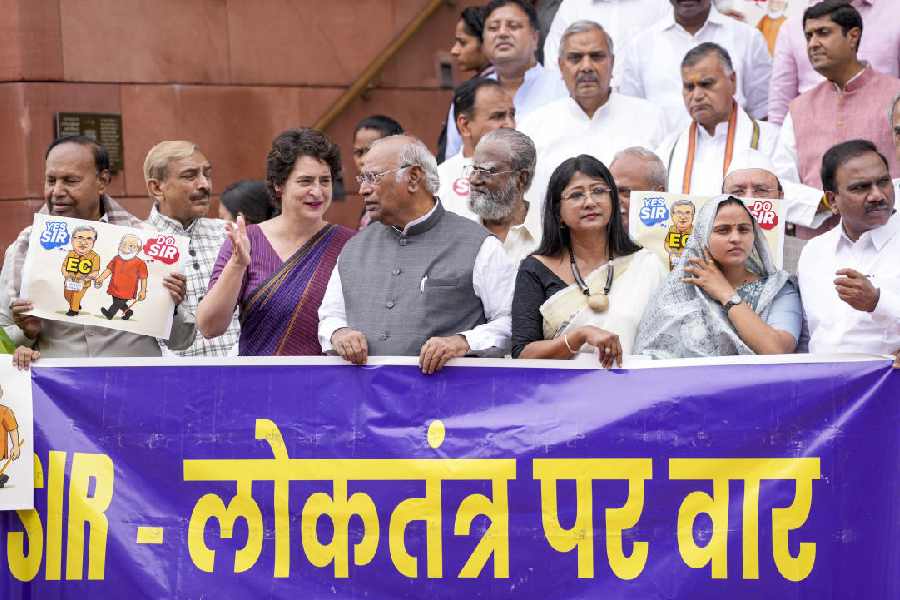
I would say Snapchat is an interesting social media platform, but its value as a reliable medium for average advertisers remains to be demonstrated — Arvind Rangaswamy, Anchel Professor of Marketing, The Smeal College at Penn State, told us over email days before addressing IIMC Alumni Association’s GuruSpeak 2016-17 initiative, with The Telegraph, at ITC Sonar on March 11. Over to the digital marketing expert.
Which three Indian brands do you think are winning at the moment in the digital marketing space?
I have not really followed the digital marketing space in India, but I have generally been pleased with online transactions I have done in India via companies such as Citibank.in, Flipkart.com, marudhararts.com, Tatasky.com, and Vodafone.in. India has a rich talent pool in technology, and I hope someday very soon, an Indian company in the digital space will become a global brand (like Alibaba). I would say that every company in India, small or large, can benefit by having a presence online to reach a global audience (after all, www stands for the worldwide web).
So how does a company decide on the platform(s) to invest in?
The CMO (chief marketing officer) today is making decisions about how to split the budget between traditional advertising and digital advertising, and this split can range from a low of less than five per cent to almost 100 per cent towards digital depending on a company’s marketing strategy. Within digital marketing, broadly, you need to think about both search advertising and social advertising. And, within each, you need to decide how much of the budget goes into facilitating organic results versus engaging in paid advertising. And, the digital marketer also has to decide how much of the total effort goes into brand building (example, display ads) versus immediate sales (example, site traffic). So, investment decisions are complex.
There is now an infrastructure risk for companies, especially those that rely on platforms like Google and Facebook. Too much reliance on one platform is not the right thing to do. Both Google and Facebook provide search and display advertising (example, Google’s Adwords versus Adsense). Facebook provides some alternatives for targeting that are based on things like people’s interests, status, and so on which are difficult to do in Google. For example, you can advertise to newlyweds, or those who like horror movies, or have a birthday next week, and so on.
The key to success in online advertising is measurement, so that you don’t end up paying more than you really need to get the results you want. For example, research shows that if you are the second highest bidder, it will boost your profitability. You will lose just a few clicks to the top position advertiser, but you are likely to pay much less.

Data scientists and mathematicians are suddenly “sexy”. But what are some of the worries when it comes to digital marketing and analytics?

Big data is really about figuring out correlations (especially unanticipated ones) on a massive scale. Facebook realises about $6 annually from each of its users. If it can use the massive data available to it to improve the odds you will click one of the ads they select to show to you by understanding the correlations in your data, then a 10 per cent improvement in click-throughs would increase the realised revenue to $6.60. This is where big data really shines in the marketing area — when you can make small repeated gains over a large base, and when any errors due to incorrect predictions have little consequence. But when big data is used to make connections that imply causal inferences (example, where will the next terrorist attack occur), its success is often low (example, Google’s use of search queries to predict the spread of flu).
My main worry is that big data correlations may be interpreted as causal relationships, especially by naive users, and such interpretations have real consequences for society.
A second concern I have is that there is high degree of selectivity, especially in social media, in how some of the big data gets generated — this is called the echo chamber effect. In recent weeks, there has been a lot of talk about “fake” news, and in my view, the spread of fake news can be attributed in a substantial way to the echo chamber effect. In a fragmented media landscape, people can selectively read only things that support their views, only visit websites that they bookmark, reach out only to people like themselves, and spread only things that they deem as newsworthy. Truth and objectivity will be casualties in such an environment.
Snapchat has filed for IPO. Your thoughts.

Most people who use Snapchat are under 25. I don’t use it, but my daughter does! Snapchat is a “socially networked camera app” which allows you to communicate creatively using highly customised pictures, instead of text. Snapchat helps you to expand the viewership of the momentary aspects of your life enabling you to “live a larger life” through the app. It has become a cultural phenomenon where more than 200 millennials share moments from their lives with their friends in a fun way, without worrying that the content will linger around on the Internet for ever.
With regard to marketers, some advertisers/publishers post short-lived fun-filled news items on Snapchat to reach this target segment. Brands have to go where their target segments live online! For such brands, Snapchat provides a platform to convey that you are a fun brand, and enables you to engage meaningfully with a segment that may be among your best customers or employees in the future.
For example, even a company like General Electric is experimenting with Snapchat to interest millennials in science and engineering. Overall, I would say Snapchat is an interesting social media platform, but its value as a reliable medium for average advertisers remains to be demonstrated. At the same time, I view it as having the potential to become an e-commerce platform, just like Facebook’s Marketplace.
What: IIMC Alumni Association’s GuruSpeak 2016-17, in association with The Telegraph
Topic: Digital Marketing & Analytics When: March 11 Where: ITC Sonar










